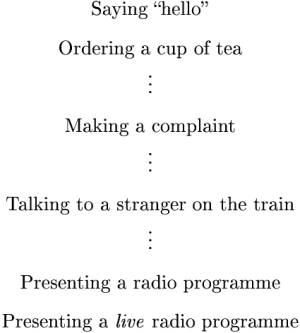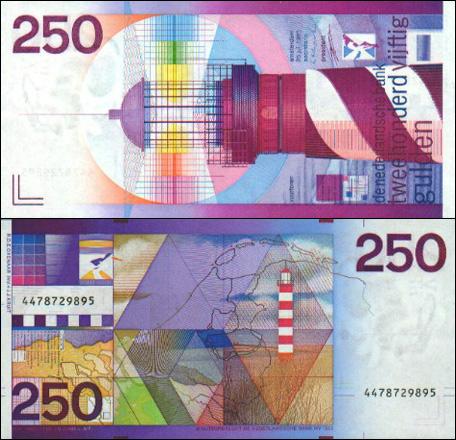This all started just as I was completing one of my National Diplomas in radio broadcasting. As a cyclist, I’ve been fascinated by the Netherlands and its cycling culture ever since I started reading about it: the posts on the excellent A view from the cycle path are probably what pushed me to finally go. I wanted to at least experience the infrastructure and cycling ‘way of life’ in the Netherlands, so I came up with an idea of using the course to my advantage to ask for a little work experience at an English-language radio station.
I applied just after the New Year for a short internship at the international station Radio Netherlands Worldwide – which is currently having large chunks chopped off of it. The management at RNW said that an intern staying for just two weeks (actually my fortnight-long Easter holiday) probably wouldn’t have been of much assistance. This lead to me into negotiations with my tutors at Cambridge Regional College and I managed to get what would have been the first week back after the Easter holiday off.
My father drove me to the Harwich ferry terminal to catch the 09:00 sailing to Hoek van Holland on 9 April 2011. With me was my trusty Challenge Hurricane recumbent bicycle (which is sitting next to me in my flat as I type) and four cycling bags attached. I set off towards the terminal, the ferry and a three week-long internship at an international radio station.
The 130 km cycle ride that followed disembarking the Stena Hollandica was, I’ll admit, not properly thought through. But I made it to my B&B-slash-campsite later that evening albeit exhausted and disorientated. I was staying in the small village of Lage Vuursche, which would be my “home” for the next few months; and it’s worth mentioning that the woodlands that surround Lage Vuursche have possibly the sandiest soil I’ve ever encountered. During the second or maybe the third week of the internship, the chain on my Hurricane snapped. This was most certainly the work of the sandy nature of the cycleways that I rode on as part of my daily commute through the Maartensdijkse Bos. A new chain would have set me back at least a hundred euro – the chain on a recumbent is roughly three ‘normal’ chain lengths – so I thought the best thing to do would be to leave my bike with the owners of the B&B, and return to the Netherlands to pick up my Hurricane (with a new chain in my pocket bag) the following weekend. Oh, and of course take the bus to work for the rest of my internship.
I’m a little sketchy on what happened next. I’ve tried to figure it out by going back through old tweets and checking emails from way back when, but …it appears we have a memory gap. Radio Netherlands some way or another offered me a second internship; this time working with the Earth Beat team. Earth Beat is a programme all about new and clever ways of interacting with the planet – the programme’s podcast is actually how I came across RNW in the first place; I mean I could have gone to another station somewhere else in Europe, or perhaps even stayed at home and relaxed over my Easter holiday (but that’s not like me). Unlike my first internship – where I was working ad-hoc as a journalist and editor for the station’s news site – the second internship saw me tackling the task of editing programmes for rebroadcast. My outright OCD approach to editing audio, which can slowly drive others insane, actually turned out to be extremely beneficial to this project – a sister station in Bhārat had selected a few dozen segments (there are roughly four segments per episode) from different episodes of the programme, and they wanted them cut down to precisely three minutes in length. But the length of a segment varies from four minutes to, I think in one case, fifteen minutes; so cutting already edited segments down further without them losing charm or being less engaging was a real challenge, but one I enjoyed thoroughly.
While heading into Amsterdam to meet my Parisian cousin – who was in town to visit her Dutch boyfriend – I knew I’d have a little time to spare, so I popped into the Mister B (NSFW) store on the Warmoesstraat for …well, I actually popped in for supplies. One thing led to another and later that afternoon when I got back to the B&B, I emailed them my CV and left it at that. I got an interview with the chairman of the company Wim and general manager Wouter over what I could bring to the company and what experience I had in the workplace (none), or what experience I had in the fetish scene (urmm…) – I’m surprised I even got the job.
I was hired as an assistant to the marketing department, and while the arrangements at work were a little unstructured at first, I was quickly assigned the task of processing mailorders – something I’m still doing to this day. After a few months, I got asked to do more and more design work (which is after all what I’m actually qualified to do) and at the moment, I split my time between designing web and print graphics for marketing, and the processing of the mailorders operation.
Even with a salary under my belt for the first time ever, I was still living in the tent for the first fortnight of my new job. I was very lucky to find a flat on Craigslist – since housing of any kind in the Netherlands comes few and far between – in the last week or so of the second internship at RNW, but I was unable to move in straight away. In total, 42 nights were spent in that tent and I can say with great passion that I am never under any circumstances, ever again going camping.
I soon (thankfully) moved out of the tent and into the suburb of Diemen, just outside Amsterdam – so close to my work in fact that I commuted many a sunny, warm August morning on foot. I remember spending quite a lot of my time walking in the Summer: the nearest decent supermarket was no less than a twenty-minute walk away but at least this meant I got some fresh air on a regular basis. That isn’t really the case in Haarlem (where I live now), though I do walk four kilometres a day to and from the station and an extra 2 km every other day to get to the gym; but I don’t really “go for a walk” anymore.
Autumn is kind of a blur to be honest – I remember that the weather was very changeable, but that’s about it. I moved up from Diemen to a small flat in Amsterdam-Noord; which I shared for a short time with a Scot, an American, and then an architecture student from the Basque Country. The thing I loved most about living in Noord – apart from being fifteen minutes from Amsterdam Centraal with next to no tourists (which is impossible south of the river) – was cycling to work. I do kind of miss doing that; and also while it was alright for a couple of months, I don’t think I’d be able to deal with the ferries across the IJ again – especially not with the new, earlier working hours I have.
I moved once more in December: this time with the intention of actually staying put for a while. I now live pretty much in the centre of the beautiful 13th-century capital of North Holland, Haarlem. The flat that I have now isn’t the biggest and didn’t come furnished in any way – other than with a sink and a small desk unit built-in to one of the alcoves – but it actually feels like home to me now, rather than feeling like just another flat. And that’s where I’ve stayed for the last four months – I’m still at Mister B and thankfully, someone else’ll be taking over my other roles by the end of the month, allowing me to focus on my design work; but my colleagues there have done impeccably well to put up with me for this long and I’d like to thank them so much for helping me learn Dutch, integrate a little into society here and of course for being outstanding colleagues to work with.
Tomorrow marks one year since I arrived in the Netherlands. I had a rather silly idea the other week that every year on 9 April, I should go back to Hoek van Holland with my recumbent and try to beat my record cycling to Lage Vuursche; but I’m glad common sense beat me to it on that one.

